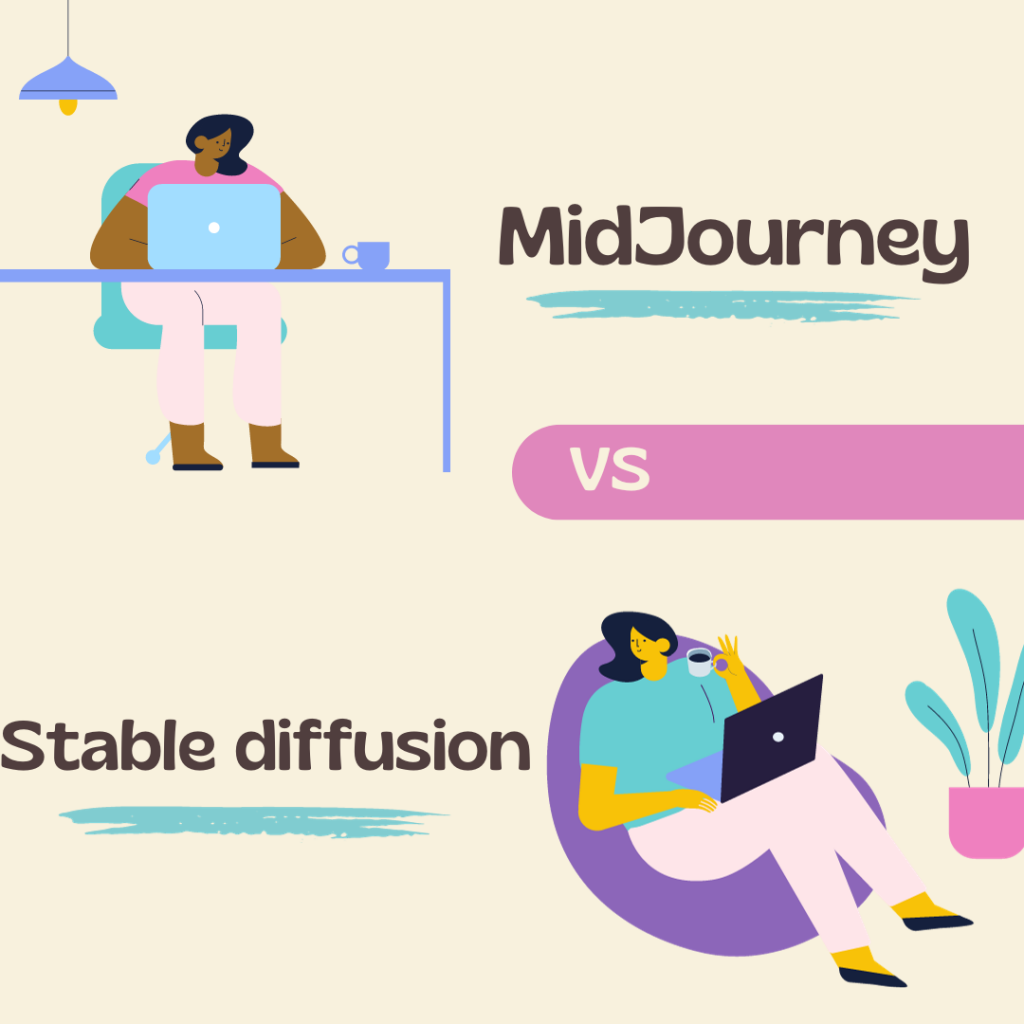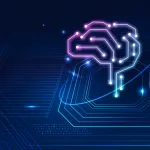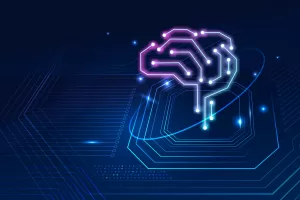Artificial intelligence has made remarkable strides in the field of image generation, with the advent of powerful generative models. Two such models that have gained significant attention in recent years are Midjourney and Stable Diffusion. Both of these models have demonstrated the capability to generate high-quality images, but they differ in various aspects, including their architecture, training methods, and use cases. In this blog, we’ll delve into a detailed comparison of Midjourney and Stable Diffusion to help you decide which AI image generator is best suited for your needs.
Midjourney: The Art of Style and Diversity
Midjourney is a generative model that has gained recognition for its ability to create diverse and stylized images. Developed by a team of researchers, Midjourney focuses on the intricate details of . Here are some key points to consider when evaluating Midjourney:
Style Diversity:
Midjourney’s standout feature is its exceptional style diversity. It excels at generating images in a wide range of artistic styles, from replicating the brushwork of famous painters like Van Gogh, Monet, and Picasso to creating entirely unique and innovative styles. This adaptability makes it an ideal choice for artists and designers looking to push the boundaries of visual creativity.
Fine Details:
Midjourney’s proficiency extends to capturing fine details in images with exceptional precision. This aspect is particularly valuable for generating images that demand a high level of intricacy and fidelity. It excels in creating images with intricate patterns, textures, and small-scale elements, ensuring that the output is not only visually appealing but also rich in detail. This is a key advantage for artists who want to create artwork with a high level of complexity and intricacy.
Creative Applications:
Midjourney is a popular choice among artists and creators who are looking to craft artwork and designs that require a significant degree of artistic creativity. Whether you’re developing illustrations, fashion designs, or any visually appealing content that necessitates a distinctive artistic touch, Midjourney can be a valuable tool in your creative arsenal. Its ability to infuse creativity and style into generated images is a testament to its versatility in serving artistic endeavors.
Training Data:
The foundation of Midjourney’s capabilities is the extensive and diverse training data that it draws upon. This data is often curated from a wide array of sources, which may include famous art collections, historical masterpieces, and contemporary works of art. By training on such a diverse set of reference points, Midjourney equips itself with a broad artistic knowledge base.
Latent Space Exploration:
Midjourney offers users the exciting ability to manipulate the latent space, a key feature that empowers creators to craft unique and personalized images. By adjusting the parameters within the model’s latent space, users can exercise a high degree of creative control, customizing the generated output to suit their specific vision. This functionality encourages exploration and experimentation, enabling artists to fine-tune their creations with precision and artistry.
Resource Intensive:
It’s important to note that while Midjourney offers a wealth of creative possibilities, it can be resource-intensive in terms of both training and usage. To fully leverage its capabilities, a powerful GPU is often required to ensure that the model operates efficiently. This consideration is crucial for individuals or organizations looking to harness the full potential of Midjourney and should be factored into the decision-making process when choosing an AI image generator.
Stable Diffusion: The Science of Realism and Consistency
Stable Diffusion AI Image Generator, on the other hand, is another prominent AI image generator, but it focuses on a different set of features compared to Midjourney. Here are some key factors to consider when evaluating Stable Diffusion:
Realism and Photorealism:
Stable Diffusion stands out for its prowess in generating images that exhibit a high degree of realism. This quality is of paramount importance in fields like computer vision, where AI systems need to analyze and interpret visual data that mirrors the real world as closely as possible. The ability to produce photorealistic images is a distinguishing feature that makes Stable Diffusion invaluable in applications such as object detection, image recognition, and autonomous vehicles.
Consistency and Stability:
Stability in image generation is a critical aspect that Stable Diffusion excels in. When you need a reliable and consistent source of image data, especially for scientific experiments and research, this model’s ability to maintain a high level of quality throughout the generation process is a considerable advantage. It reduces the likelihood of anomalies or unexpected variations in the generated images, which is crucial in controlled experimental settings.
Data Augmentation and Machine Learning:
Data augmentation in machine learning enhances model generalization by creating data variations. Stable Diffusion excels at this, generating diverse, realistic image variations, valuable for expanding and improving training datasets. This contributes to building robust and reliable AI models.
Scientific Applications and Simulation:
In scientific research and experimentation, the need for high-quality, diverse datasets is ever-present. Stable Diffusion’s ability to generate images that closely resemble real-world data is particularly beneficial in this context. It is instrumental in creating data for simulations, experiments, and training machine learning models in domains such as medical imaging, climate modeling, and material science, where the integrity and fidelity of the data are critical for accurate results.
Diverse Training Data:
The diversity of training data used in developing Stable Diffusion contributes significantly to its capacity to generate varied and realistic images. The model learns from a broad spectrum of images, encompassing various scenes, objects, and visual contexts. This breadth of knowledge empowers Stable Diffusion to generate images that span different domains and styles with authenticity and precision.
Efficiency:
Efficiency is another notable feature of Stable Diffusion, especially when compared to some other generative models. While it can still be computationally demanding, its efficiency shines through in specific applications like data augmentation. This efficiency is vital when dealing with large datasets or in scenarios where quick and reliable image synthesis is required without excessive computational resources.
Here is a table that summarizes the key differences between Midjourney and Stable Diffusion:

| Feature | MidJourney | Stable diffusion |
| Availability | Closed-source, available through paid subscription | Open-source, available for free or through paid subscription |
| Creativity | Excellent | Good |
| Versatility | Good | Excellent |
| Customization options | Good | Excellent |
| Inpainting and outpainting | Yes | Yes |
| Community support | Active Discord community | Active online community |
Also read: “How generative AI can help improve business“.
Choosing the Right Tool for the Job
The choice between Midjourney and Stable Diffusion largely depends on your specific use case and requirements. Here are some key considerations to help you make the right decision:
Artistic Creativity:
If you’re an artist or designer seeking to explore various styles and creative possibilities, Midjourney might be the better choice for you. This model empowers artists to push the boundaries of their creativity. Whether you want to mimic the brushwork of a famous painter or create entirely novel artistic styles, Midjourney’s diverse capabilities can be a source of inspiration.
Realistic Data Synthesis:
For those prioritizing photorealistic images and scientific applications, Stable Diffusion is the preferred choice. It excels in replicating real-world subtleties crucial in fields like medical imaging, autonomous vehicle development, and complex natural phenomena simulation. Stable Diffusion’s reliability in producing consistent, lifelike images makes it a trusted ally in precision-demanding tasks.
Resource Constraints:
Consider your available hardware; Midjourney can be resource-intensive, demanding substantial computing power, particularly for complex images. Limited access to high-performance GPUs may affect your choice. In contrast, Stable Diffusion is designed for efficient resource utilization, making it suitable for those with hardware limitations.
Latent Space Manipulation:
If you require the ability to manipulate the latent space to create personalized images, Midjourney offers more flexibility. The latent space of an AI model represents a multidimensional space where variations can be made to generate unique images. Midjourney allows you to navigate this space with ease, making it an ideal choice for those who want to fine-tune and experiment with their creations. Whether you want to create a digital masterpiece that reflects your personal style or adapt the output for a specific project, Midjourney provides the tools for such creative freedom.
Consistency and Stability:
Stable Diffusion is designed for generating images with high consistency and stability, which can be critical for some applications. In scientific and research contexts, reproducibility and reliability are paramount. Stable Diffusion excels in consistency, ensuring accurate and dependable experiments and simulations. This reliability is vital in fields like climate modeling, drug discovery, and quality control, where slight data variations can have significant consequences.
Conclusion
In conclusion, both Midjourney and Stable Diffusion are powerful AI image generator, but they cater to different needs and applications. Understanding the strengths and weaknesses of each model will help you make an informed decision and leverage the right tool to achieve your image generation goals. Whether you’re an artist, a researcher, or a developer, these models represent exciting possibilities for the world of artificial intelligence and image generation.


























Add Comment